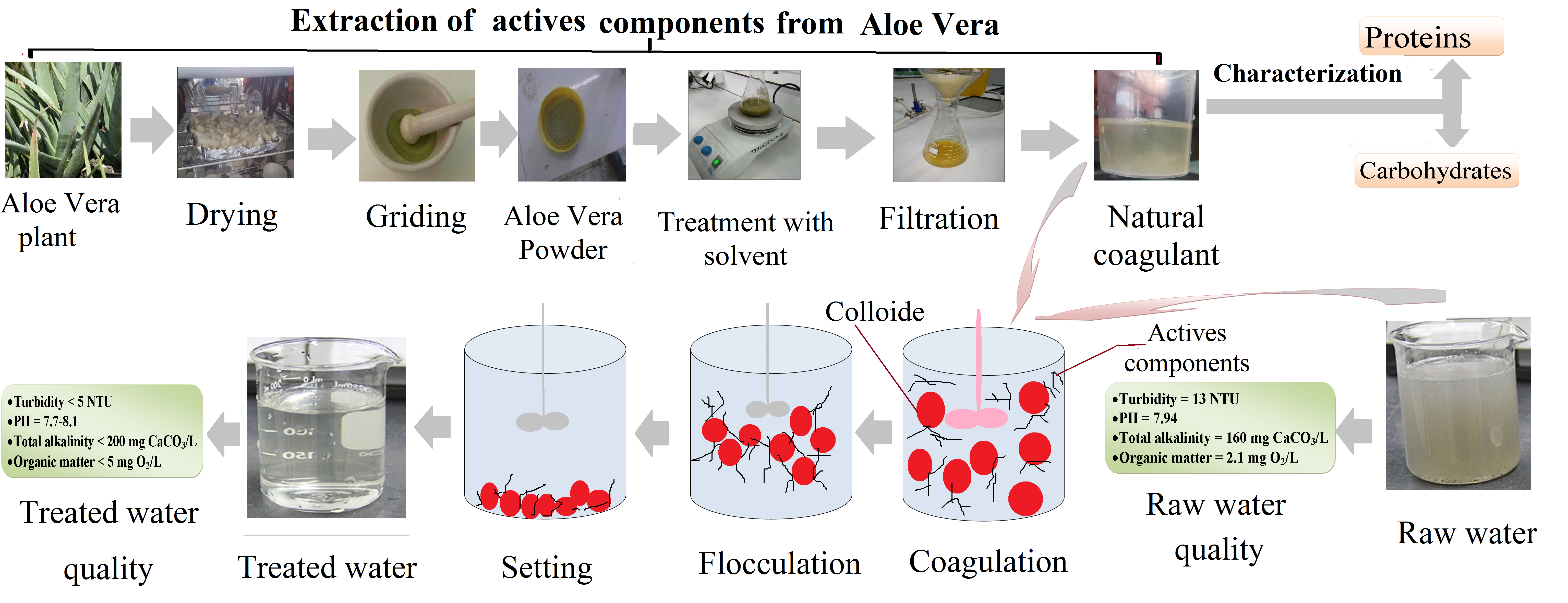 Open Access
Open Access
ARTICLE
The Use of Aloe vera as Natural Coagulant in Algerian Drinking Water Treatment Plant
1 Faculty Process Engineering, University of Constantine 3, Constantine, 25000, Algeria
2 National Polytechnic School of Constantine, Constantine, 25000, Algeria
3 LERMAB-ENSTIB, University of Lorraine, Epinal, 88000, France
4 Institut Jean Lamour, Université de Lorraine, CNRS, Nancy, 54011, France
* Corresponding Author: Kerroum Derbal. Email:
Journal of Renewable Materials 2022, 10(3), 625-637. https://doi.org/10.32604/jrm.2022.017848
Received 11 June 2021; Accepted 29 July 2021; Issue published 28 September 2021
Abstract
The purpose of this work is the study the ability of the plant material Aloe vera to act as natural coagulant using raw water obtained from a drinking water treatment plant (Mila, Algeria). Different solvents such as: NaCl; NaOH and HCl were used as chemical activators to extract the active components from the Aloe vera plant, and different coagulation-flocculation experiments were conducted in a jar test apparatus to evaluate the performance of the extracted coagulant. Also, the effect of coagulant dose on some water parameters such as turbidity, pH, total alkalinity and organic matter were investigated. The results showed that the use of coagulants obtained by using different solvents increases the coagulation efficiency compared to the coagulant obtained from the raw material, for example the maximum turbidity removal efficiency was 28.23, 78.07, 83.46 and 85.15% when using powdered Aloe vera (raw material), AV-NaCl (0.5 M), AV-NaOH (0.05 M) and AV-HCl (0.05 M), respectively. The results defined, that the residual turbidity obtained in this work, where the Aloe vera was used (after treatment by solvents) produced a turbidity lower than the Algerian standard (5 NTU) with initial turbidity (13 NTU). In this study, the infrared spectrum study and analysis has revealed the presence of different functional groups, which are responsible for the coagulation process.Graphic Abstract

Keywords
Cite This Article
 Copyright © 2022 The Author(s). Published by Tech Science Press.
Copyright © 2022 The Author(s). Published by Tech Science Press.This work is licensed under a Creative Commons Attribution 4.0 International License , which permits unrestricted use, distribution, and reproduction in any medium, provided the original work is properly cited.


 Submit a Paper
Submit a Paper Propose a Special lssue
Propose a Special lssue View Full Text
View Full Text Download PDF
Download PDF Downloads
Downloads
 Citation Tools
Citation Tools